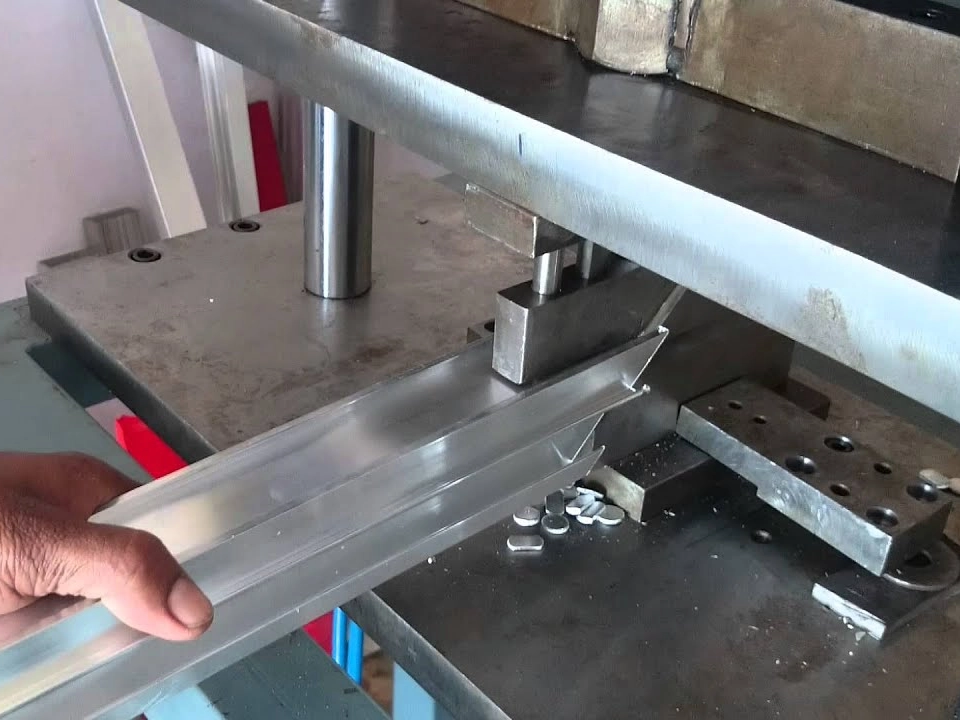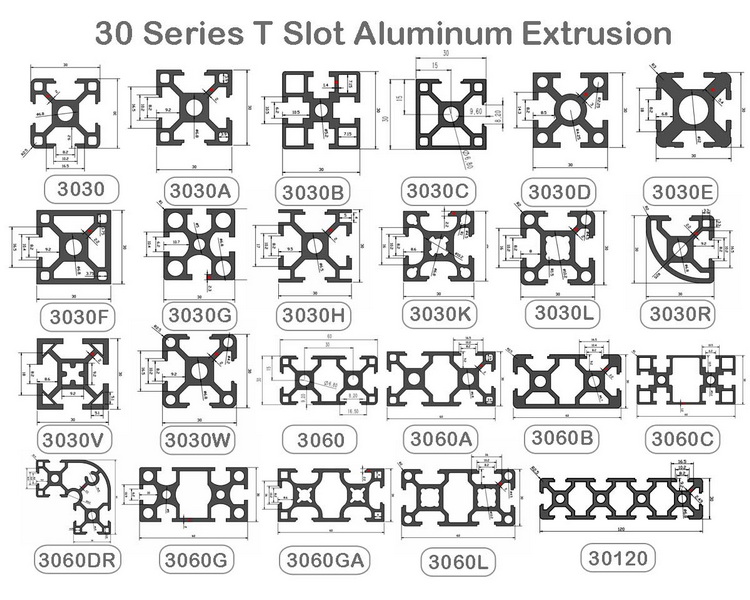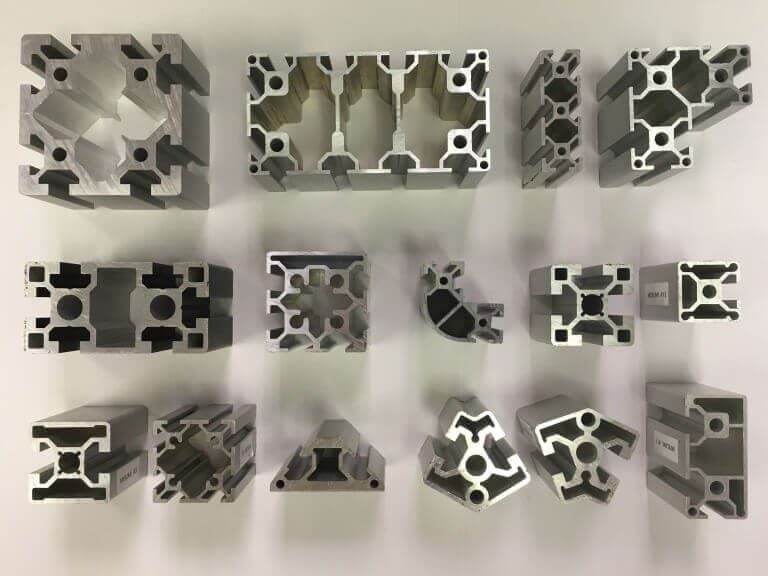Content Menu
● Introduction to Aluminum Extrusion
● Understanding the Aluminum Extrusion Process
● The Strength of Aluminum Extrusions
● Applications of Aluminum Extrusions
● Advantages of Aluminum Extrusion
● Challenges and Considerations
● Future Trends in Aluminum Extrusion
● Conclusion
● Frequently Asked Questions
>> Q1: What is the strongest aluminum alloy for extrusion?
>> Q2: How does the extrusion process affect the strength of aluminum?
>> Q3: Can aluminum extrusions be as strong as steel?
>> Q4: How long do aluminum extrusions last?
>> Q5: Are there any limitations to the shapes that can be created through aluminum extrusion?
Introduction to Aluminum Extrusion
Aluminum extrusion is a transformative manufacturing process that has revolutionized numerous industries, from construction and automotive to aerospace and consumer goods. This versatile technique allows for the creation of complex shapes with consistent cross-sections, offering a perfect blend of strength, lightweight properties, and design flexibility. In this comprehensive guide, we'll explore the intricacies of aluminum extrusion, its strength characteristics, the manufacturing process, and its wide-ranging applications.

Understanding the Aluminum Extrusion Process
The aluminum extrusion process is a marvel of modern engineering, combining heat, pressure, and precision to transform raw aluminum into sophisticated profiles. Let's break down this process step by step:
1. Billet Preparation: The process begins with an aluminum billet, a solid cylindrical block of aluminum alloy. The choice of alloy is crucial, as it determines the final properties of the extruded product.
2. Preheating: The billet is heated to temperatures ranging from 800°F to 925°F (427°C to 496°C). This softens the aluminum, making it malleable enough for extrusion.
3. Lubrication: The die and other tooling components are lubricated to reduce friction and ensure smooth extrusion.
4. Extrusion: The heated billet is placed in a container and pushed through a die using a hydraulic ram. The die's opening determines the cross-sectional shape of the extruded profile.
5. Cooling: As the aluminum emerges from the die, it's cooled using air or water to solidify its shape.
6. Stretching: The extruded profile is stretched to straighten it and relieve internal stresses.
7. Cutting: The profile is cut to the desired length.
8. Heat Treatment: Depending on the alloy and desired properties, the extrusion may undergo heat treatment to enhance its strength and durability.
9. Finishing: The final step may include surface treatments like anodizing or painting to improve aesthetics and corrosion resistance.
The Strength of Aluminum Extrusions
One of the most frequently asked questions about aluminum extrusions is, "How strong are they?" The answer lies in a combination of factors, including the alloy composition, extrusion design, and post-extrusion treatments. Aluminum extrusions typically exhibit excellent strength-to-weight ratios, making them ideal for applications where both strength and lightweight properties are crucial. The tensile strength of aluminum extrusions can range from 30,000 to 60,000 psi (pounds per square inch), while the yield strength typically falls between 25,000 to 50,000 psi.
Several factors contribute to the strength of aluminum extrusions:
1. Alloy Selection: Different aluminum alloys offer varying levels of strength. For instance, 6061 and 6063 are commonly used alloys known for their good strength and excellent extrudability.
2. Profile Design: The cross-sectional design of the extrusion can significantly impact its strength. Hollow profiles and those with internal webbing often offer superior strength-to-weight ratios.
3. Wall Thickness: Thicker walls generally result in stronger extrusions, although this must be balanced with weight considerations.
4. Heat Treatment: Post-extrusion heat treatments can dramatically enhance the strength of certain alloys.
5. Cold Working: Some extrusions undergo cold working processes, which can increase their strength through work hardening.
Applications of Aluminum Extrusions
The versatility and strength of aluminum extrusions have led to their adoption across a wide range of industries. Here are some key applications:
1. Construction and Architecture: Aluminum extrusions are extensively used in window frames, door frames, curtain walls, and structural supports. Their corrosion resistance and aesthetic appeal make them ideal for both interior and exterior applications.
2. Transportation: In the automotive and aerospace industries, aluminum extrusions are prized for their lightweight properties, which contribute to fuel efficiency. They're used in vehicle frames, body panels, and various structural components.
3. Electronics and Telecommunications: Heat sinks, LED housings, and antenna components often utilize aluminum extrusions due to their excellent heat dissipation properties and electromagnetic shielding capabilities.
4. Renewable Energy: Solar panel frames and wind turbine components frequently incorporate aluminum extrusions, taking advantage of their strength and weather resistance.
5. Consumer Goods: From furniture to appliances, aluminum extrusions find their way into numerous household items, offering durability and modern aesthetics.
6. Industrial Machinery: Conveyor systems, pneumatic cylinders, and robotic components often rely on the precision and strength of aluminum extrusions.
Advantages of Aluminum Extrusion
The popularity of aluminum extrusions stems from several key advantages:
1. Design Flexibility: Complex shapes can be created in a single piece, reducing the need for assembly and welding.
2. Cost-Effectiveness: For medium to high volume production, extrusion offers excellent cost efficiency.
3. Sustainability: Aluminum is 100% recyclable, making extrusions an environmentally friendly choice.
4. Excellent Finish: Extrusions can achieve smooth surfaces directly from the die, often requiring minimal finishing.
5. Consistency: The extrusion process ensures uniform cross-sections along the entire length of the profile.
6. Customization: Dies can be custom-designed to create unique profiles tailored to specific applications.

Challenges and Considerations
While aluminum extrusion offers numerous benefits, there are some challenges to consider:
1. Initial Tooling Costs: Custom dies can be expensive, which may impact the feasibility for low-volume production.
2. Size Limitations: There are practical limits to the size of extrusions that can be produced, both in terms of cross-sectional area and length.
3. Alloy Limitations: Not all aluminum alloys are suitable for extrusion, which may limit material choices for certain applications.
4. Design Constraints: While extrusion allows for complex shapes, there are still some geometric limitations to consider in design.
Future Trends in Aluminum Extrusion
The field of aluminum extrusion continues to evolve, with several exciting trends on the horizon:
1. Advanced Alloys: Development of new aluminum alloys with enhanced properties for specific applications.
2. Micro-Extrusion: Techniques for producing extremely small and precise extrusions for miniaturized components.
3. Simulation and Modeling: Advanced software tools for optimizing extrusion designs and processes.
4. Sustainable Practices: Increased focus on energy-efficient extrusion processes and the use of recycled aluminum.
5. Integration with Additive Manufacturing: Combining extrusion with 3D printing technologies for hybrid manufacturing solutions.
Conclusion
Aluminum extrusion stands as a testament to the ingenuity of modern manufacturing. Its ability to produce strong, lightweight, and versatile components has made it an indispensable process across numerous industries. As we continue to push the boundaries of material science and manufacturing technology, the potential applications for aluminum extrusions are bound to expand, promising exciting developments in fields ranging from sustainable architecture to space exploration.
Whether you're an engineer designing the next generation of electric vehicles, an architect envisioning cutting-edge buildings, or a product designer creating innovative consumer goods, understanding the strengths and capabilities of aluminum extrusion can open up new possibilities for your projects. By harnessing the power of this versatile manufacturing process, we can continue to build a stronger, lighter, and more sustainable future.

Frequently Asked Questions
Q1: What is the strongest aluminum alloy for extrusion?
A1: While strength can vary depending on specific requirements, the 7000 series alloys, particularly 7075, are known for their high strength. However, 6061 and 6063 are more commonly used in extrusions due to their good balance of strength and extrudability.
Q2: How does the extrusion process affect the strength of aluminum?
A2: The extrusion process can actually increase the strength of aluminum through work hardening. Additionally, the ability to create complex internal structures allows for designs that maximize strength while minimizing weight.
Q3: Can aluminum extrusions be as strong as steel?
A3: While aluminum generally has a lower strength-to-weight ratio than steel, certain high-strength aluminum alloys can approach the strength of some steels. However, aluminum's significantly lower weight often makes it a preferred choice in many applications where the strength-to-weight ratio is crucial.
Q4: How long do aluminum extrusions last?
A4: Aluminum extrusions are known for their durability and longevity. In many applications, they can last for decades with proper maintenance. Their resistance to corrosion, especially when anodized, contributes significantly to their long lifespan.
Q5: Are there any limitations to the shapes that can be created through aluminum extrusion?
A5: While aluminum extrusion allows for a wide range of shapes, there are some limitations. Very thin walls, extremely complex shapes with varying thicknesses, and certain types of undercuts can be challenging or impossible to extrude. However, advancements in die design and extrusion technology continue to expand the possibilities.






















